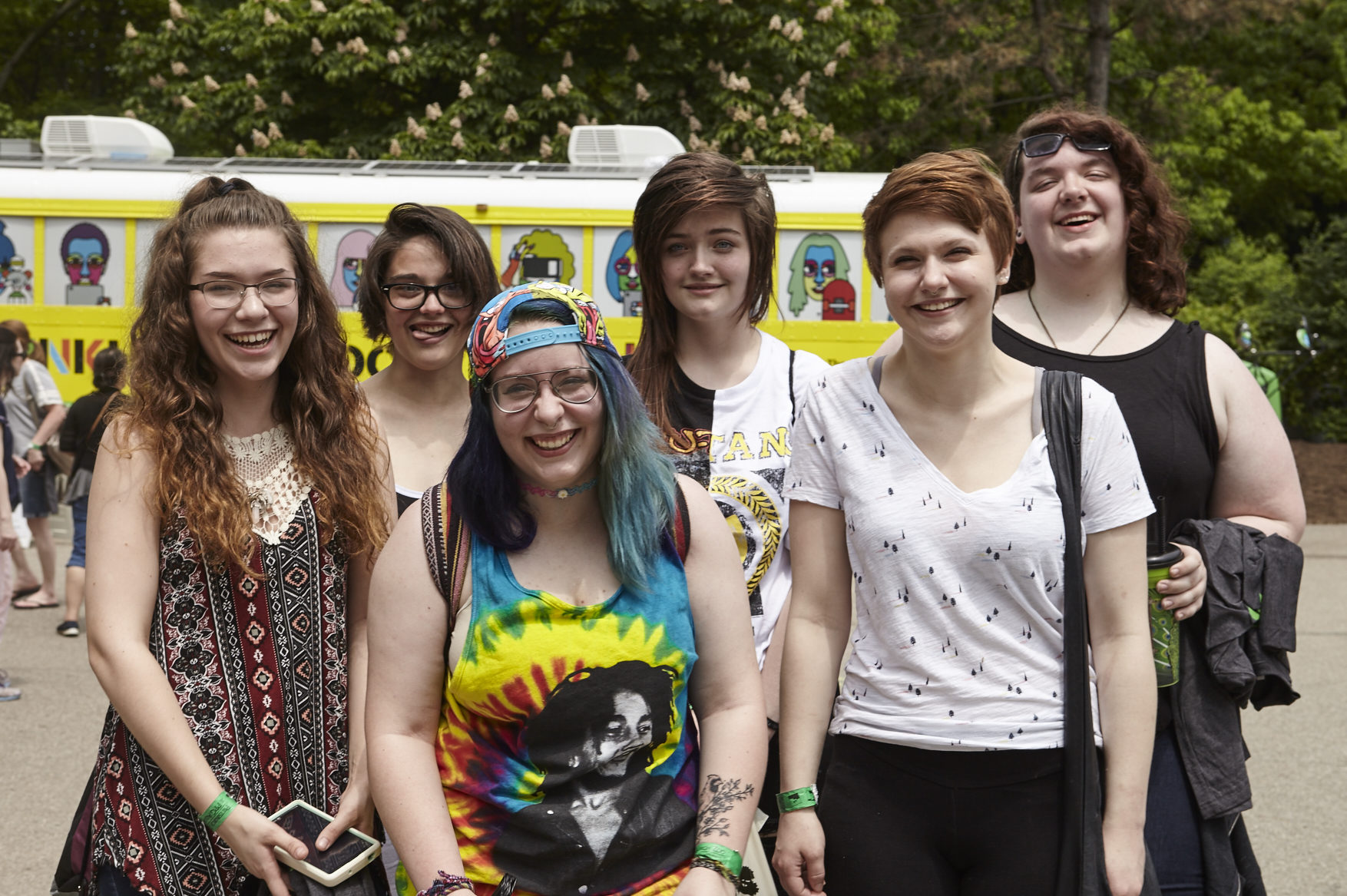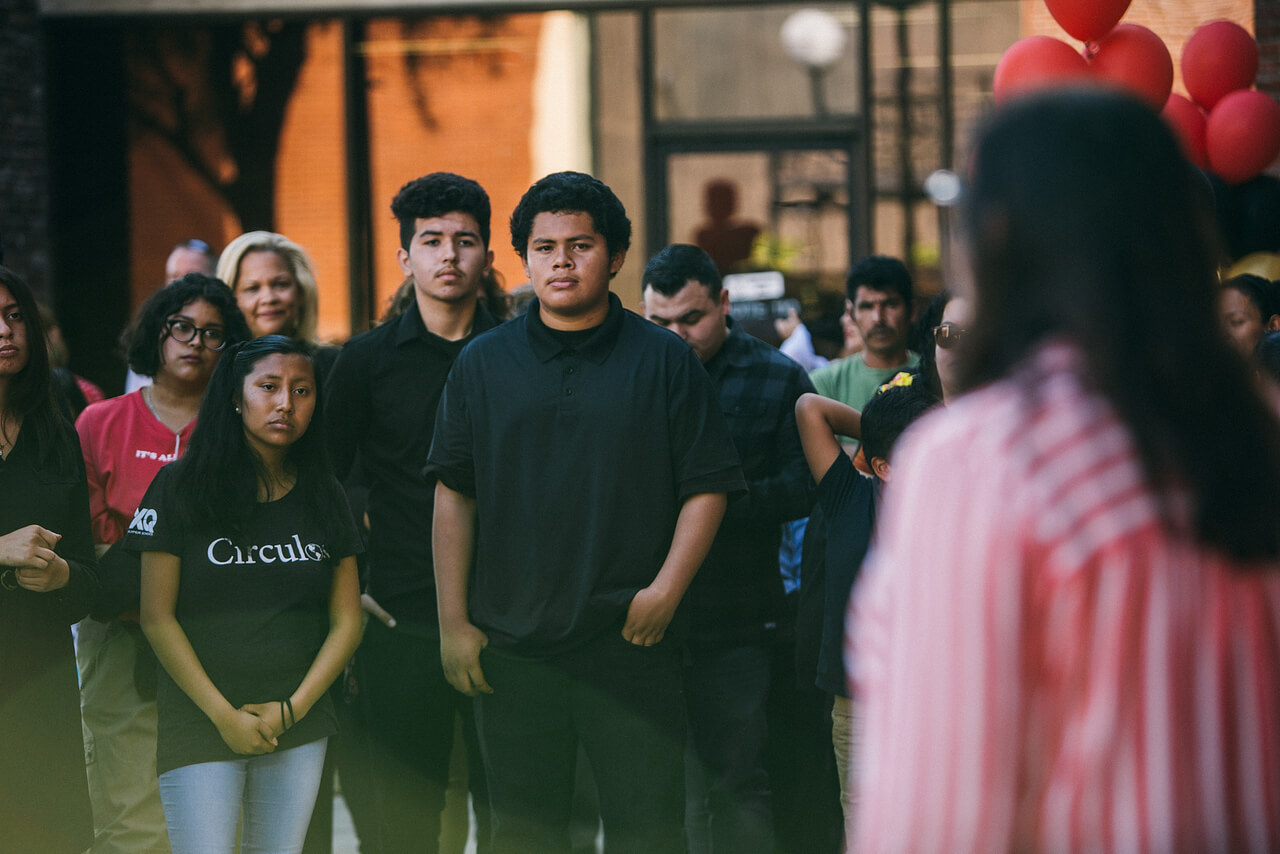Beyond Field Trips: Bringing Place-Based Learning to the Classroom
We need to build classrooms without walls. It sounds antithetical to our assumptions about school. After…


We need to build classrooms without walls. It sounds antithetical to our assumptions about school. After all, a school is where you go to learn, and classrooms are where teachers instruct students. But if you’ve ever been on a school field trip, then you’ve already experienced a classroom without walls.
Also known as experiential learning or place-based learning, field trips create meaningful, engaged learning experiences for students—a key Design Principle XQ uses as a tool for transforming high schools. Researchers have documented tremendous benefits to these learning opportunities. They promote authenticity, multi-sensory engagement, and directed social interactions. However, making them equitable for all learners requires advanced planning. To better enhance a field trip, and deepen student learning opportunities, educators should understand the basics of place-based learning.
I reached out to Arlyn Shelton, an instructional coach from the Santa Ana Unified School District (SAUSD) in California, and one of the original educators from Círculos, an XQ Super School there. Shelton shared with me strategies from Círculos’ first year that helped the staff understand how to do a better job with place-based learning. She described how, from the start, they held true to one idea–-learning from a classroom without walls.
The Fundamentals of Place-Based Learning
The name Círculos comes from the Spanish term for circle–círculo. By learning out in the real world, not just in traditional classrooms, the school’s founders aspired for success to come full circle as students learn from the community, and the community supports the students.
Shelton was one of the first teachers to lead a small cohort of students in 2017, the school’s opening year. “I was working at Chávez High School, and they asked if I wanted to do this crazy cool idea of having a classroom with no walls,” she recalled. César E. Chávez High is a school in Santa Ana that helps support struggling students. Círculos was based there when it started.
Círculos emphasizes place-based learning, which is not to be confused with project-based learning or problem-based learning (unhelpfully, they all use the acronym PBL). According to the Center for Place-Based Education, place-based learning is the “starting point to teach concepts in language arts, mathematics, social studies, science and other concepts across the curriculum.” For the learning to have lasting meaning and impact, locations must tie directly with the community. When looking to identify a location, teachers should consider:
- What service does the location provide to the community?
- How does the public access the location?
- Are there any upcoming events or community celebrations?
- Are there any public figures (living or deceased) tied to the location?
- Does the location already have a student-outreach program?
Addressing these questions will help educators outline the purpose of a place-based learning experience, ensuring it is fruitful and deep for students. Shelton explained, “We would go to the local radio stations here and learn how to run them—or we’d visit nonprofits and universities to learn the process of how to run those agencies as well.” Visiting these locations meant understanding how they function and learning how their services better support the community.

Planning a Place-Based Learning Experience
A key difference between a traditional field trip and a place-based experience is whether the visit extends beyond curiosity or entertainment. Field trips occur in a single day and end when students leave. Place-based experiences continue after students leave–they can expand into multiple trips and even become the foundation of a larger project. When planning where to go, teachers should scope out the location first to better understand the potential for student engagement.
“I’ve been able to take teachers during their prep periods out to locations prior to the visit,” explained Shelton. “We have a lot of new teachers and I can give them the support of seeing the location first, and collaborating with the people there so when we bring the students, we have a better idea of how we want to handle things and how we want to organize.” As Shelton suggests, a cohesive experience is strengthened when there is considerable planning. Teachers should plan student learning in the classroom to tie directly with the outside learning experience.
Place-based learning blends exceptionally well with already established instructional practices, such as project-based learning. Both utilize design thinking and inquiry-based models to create interdisciplinary experiences. Regardless of what the “P” in the PBL stands for, both practices create authentic learning experiences for students by making learning student-centered and connecting them to their community through a hands-on approach. Often, the only separation between project-based and place-based is where the learning experience occurs, meaning that the depth of rigor and authenticity is inherently present.
Focus Place-Based Learning On the Community
Shelton described one current project at Círculos that seamlessly blends project-based and place-based learning. She said the 9th graders are engaged in a year-long history research project called “Land-Ho!” In this project, students are given a virtual piece of land in Santa Ana, and then have to decide what will go there based on their research with external partners, such as the library and the local history museum.
In the fall of 2022, she said students began by visiting local institutions, meeting with historians and experts to get a better understanding of what the community’s needs are, and how their project could highlight potential solutions. “Just continuing to expose students has helped because they are used to outdated models, like do chapter one and then take a test, do chapter two, take a test,” Shelton explained. She said that the old model easily disengages students, but the place-based learning experiences helped them build a relationship with their community. “So when we do have those students that are disengaged, I think the community-building that we’ve done has really helped,” she added.
Shelton shared numerous stories of students having wonderful experiences in their place-based learning, and I heard a common thread: in each place, the community was at the center. For example, she described the student’s visit to Segerstrom Center for the Arts, where they designed and built an interactive art exhibit for the community.
“We would take the bus, and we’d be at the theater in this room in the back. We’d get to use the space we did research on,” she said. While exploring the history of the theater, she said students then conducted research at the local mall across the street. They were organized into groups to survey the public and ask what they wanted from a local interactive art piece. The students heard from respondents about the need for a structure to provide shade and prevent noise pollution.
“They worked with an industrial artist and electrical engineer to create this art piece. It ended up being almost like a tunnel, this dome people could walk under,” Shelton explained. The students then worked with a performing arts team to create and record their own original score for the interactive art piece. Their work culminated in a community showcase to celebrate the experience of what they created, and what they learned.
Returning Full Circle
A classroom without walls is entirely possible, and from what we know, it’s engaging students all the time, all across the country, in schools that use place-based learning. It can start as a simple field trip–an idea to go out into the world and experience something beyond the limitations of the classroom. By planning instruction in correlation with the experience, teachers add authenticity and deeper layers of meaning and engagement for students. Finally, with a trip that further supports the community, the relationship between its residents and the school comes full circle.
Whether students are visiting a local library to learn more about their community’s history or visiting a museum to then build their own micro-museum exhibits, as we researched at my former school in Florida, place-based learning offers teachers a pathway for thinking outside the walls.
Let’s ReThink, Together.
Share with us on social using #ReThinkHighSchool
With your coffee:
Andrew shares with us what inquiry-based learning is. Read on to learn how it can benefit all your PBLs–project, problem and place-based.
For your PLC:
Learn from Sean more about one of our Design Principles: Community Partnerships. Read on to learn how learning happens beyond the school
-Eddie
[email protected]
Twitter: @xqamerica









